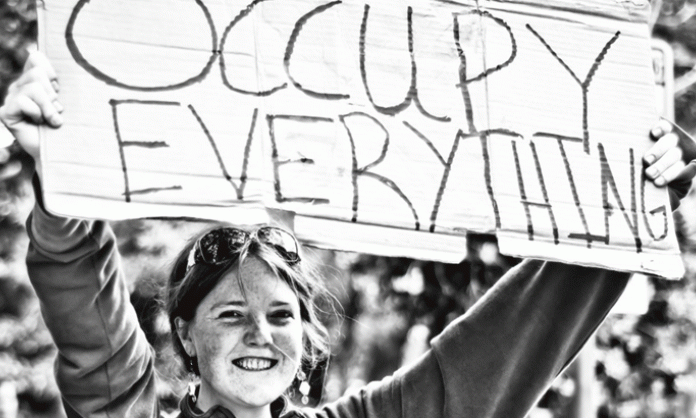The dominant ideas in society are the ideas of the ruling class. They train us to value individual success, to view greed as natural, to believe that fundamental social change is either impossible or too dangerous to attempt.
Most of the time people accept such ideas because they fit with our experience of capitalism: our lives are governed by forces that are seemingly beyond our control, while the world is run by self-interested pigs.
Yet at certain moments revolutionary upheavals and protest movements challenge the logic of the system. Ideas of solidarity and collective struggle, rather than individual advancement, gain hold over millions of people. How and why does this happen?
The possibility for change lies within the system itself. As Marx and Engels outlined more than 160 years ago in the Communist Manifesto, “The bourgeoisie cannot exist without constantly revolutionising the instruments of production, and thereby the relations of production, and with them the whole relations of society.”
On one hand they were writing about a general dynamic of the capitalist system. The pursuit of profit leads capitalists to restructure the system in various ways – such as instituting mass education systems or conscripting more women into the workforce. Although these changes are designed to benefit the rich by providing more workers who are literate and able to adapt to the most up to date workplace technologies, they also change the way workers think about themselves and the world.
Marx and Engels were also pointing out that capitalism is prone to economic crises. Periodically, the system crashes, throwing millions of people out of work and sending businesses to the wall. At such times, the dominant ideas are undermined. As the gap between people’s experience of the world and what we’re told about it grows wider, the room for alternative explanations expands.
When the capitalists go on the attack, people are forced to defend themselves – striking against austerity, protesting and occupying against injustice and lack of democracy. For some years now, this has been happening in Europe, particularly in Greece and Spain. The experience of collective action transforms people’s view of the world, opening them up to ideas they might previously have rejected.
The Occupy movement was a good example of this. Occupy Wall Street was directly influenced by workers’ resistance to austerity, in both Europe and the US. Wisconsin workers, fighting Governor Scott Walker’s attacks on collective bargaining rights, staged a weeks-long occupation of the Madison state Capitol building. The occupation inspired activists and workers to similar actions in New York City against Mayor Bloomberg.
Although the tent city “Bloombergville” was evicted, participants were some of the first activists to take up the call by anti-consumerist magazine Adbusters to Occupy Wall Street. When people began to fight back, they could see what they had in common with others in “the 99%” across the globe.
The Arab revolutions were another source of inspiration for the Occupy movement. The Egyptian masses proved that real change does not come from politicians, the media or parliament. Occupy Wall Street aimed to turn New York’s Zuccotti Park into the lower Manhattan equivalent of Tahrir Square, the most famous symbol of the Egyptian revolution.
The collective struggle of the Occupy movement both reflected and helped to reinforce the idea that society is divided – something that the rich and powerful always deny by insisting that we’re all one big community. A 2012 Pew Institute survey on attitudes to social conflicts found that 66 percent of US residents believe there are “very strong” or “strong” conflicts between the rich and poor – an increase of 19 percentage points from 2009 to 2011.
The survey’s authors believe these changes in attitudes over a relatively short period may reflect a growing awareness of the shifts in the distribution of wealth in the US, as well as the “wealth inequality message conveyed by Occupy Wall Street protesters across the country in late 2011.”
One of the main barriers to change is not that everyone is completely brainwashed. Usually, people just feel that they are alone in hating the system and are powerless to do anything. Collective action can change that. That is one of the reasons the simple chant “We are the 99%” was so powerful and had such deep resonance around the world.










